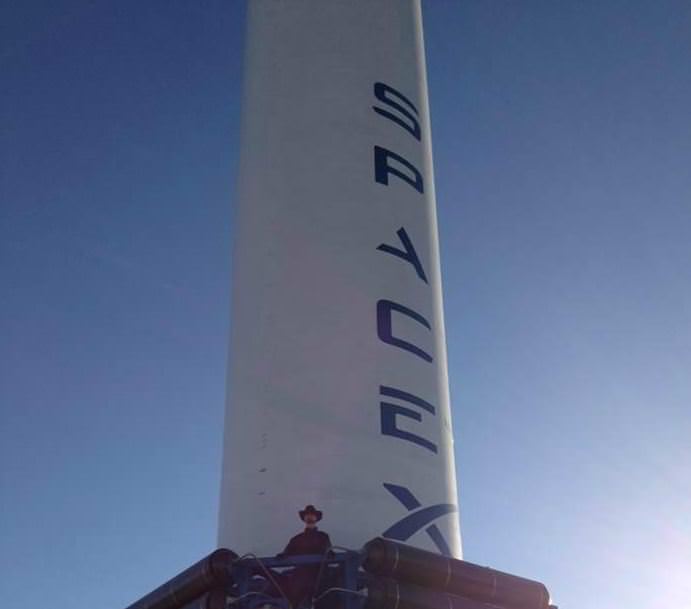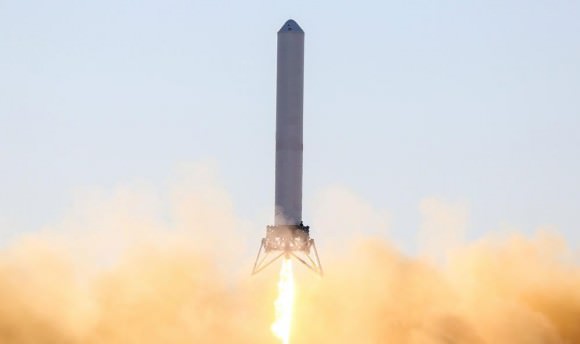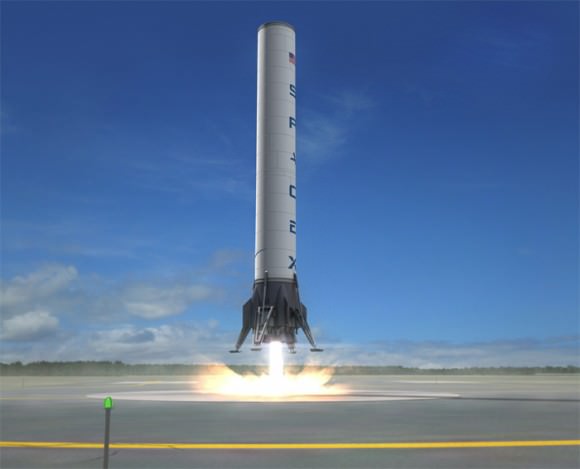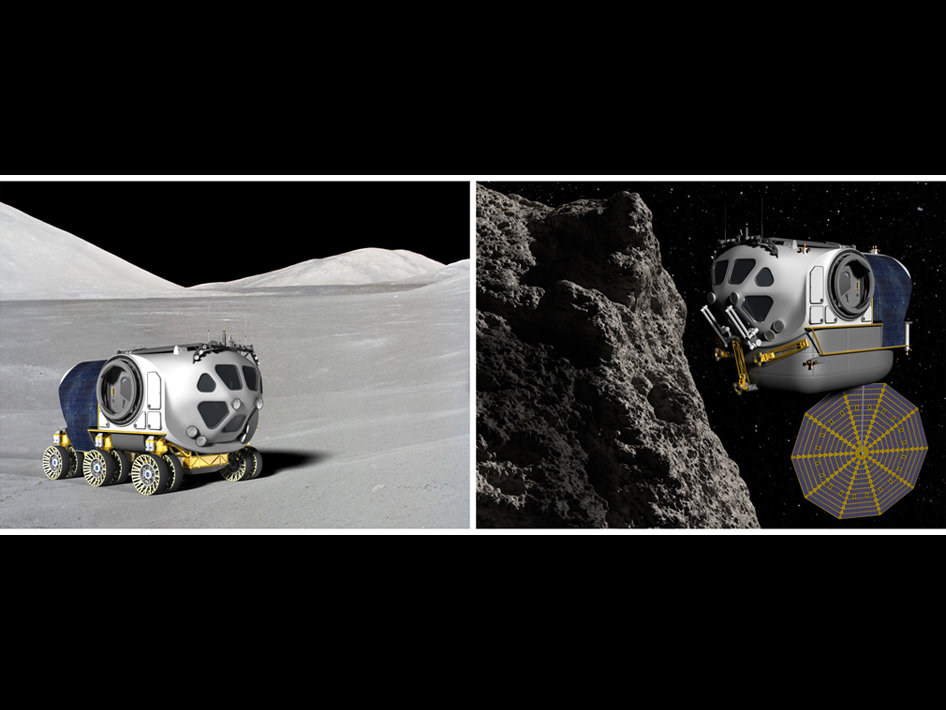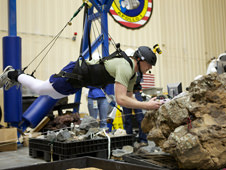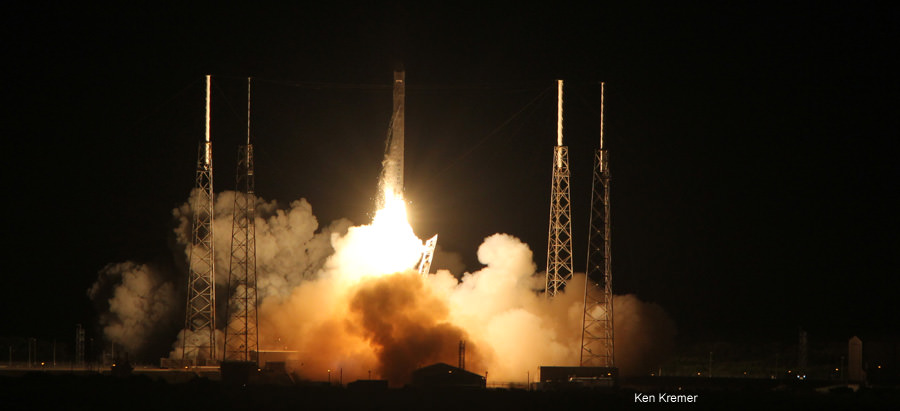Just after 10 am Eastern time, the SpaceX successfully launched their Dragon capsule on a second resupply mission to the International Space Station. The launch, rocket stage and spacecraft separations went perfectly, but the Dragon experienced an anomaly at about the time the solar arrays should have deployed. The SpaceX webcast announced that the spacecraft experienced a problem and then ended the webcast. NASA TV has not offered information either. We’ll provide more information as soon it becomes available.
Update: (10:44 EST) Elon Musk, SpaceX CEO just tweeted: “Issue with Dragon thruster pods. System inhibiting 3 of 4 from initializing. About to inhibit override.” Then minutes later he added, “Holding on solar array deployment until at least two thruster pods are active.”
See below for a continuation of our live-blogging of the Dragon anomaly, as it happened..
Also, here’s the launch video from launch to separation (note, the separation video is spectacular!):
Dragon carries 18 Draco thrusters for attitude control and maneuvering, so there may be an issue with those. Dragon’s thruster problem may be preventing the spacecraft from going into array deploy attitude, thus preventing array deploy.
Only time will tell if this is a software or hardware problem. The SpaceX press kit describes what needs to happen for solar array deploy:
Dragon separates from Falcon 9’s second stage, and seconds later, Dragon will reach its preliminary orbit. It then deploys its solar arrays and begins a carefully choreographed series of Draco thruster firings to reach the space station.
If Dragon can’t make it to the ISS, then it would need to be decided if and how it can return back to Earth on a good trajectory with limited thruster control.
The SpaceX controllers are obviously working to try and resolve the problem.
Update: 11:10 EST An update from NASA TV at about 11:10 am, said that part of response to problem with Dragon may be reorganizing the burn sequences in order for the spacecraft to be able to approach to the ISS. Musk just tweeted: “About to pass over Australia ground station and command inhibit override.”
Update: 11:25 EST: A statement from SpaceX says that “One thruster pod is running. Two are preferred to take the next step which is to deploy the solar arrays. We are working to bring up the other two in order to plan the next series of burns to get to station.”
Update: 11:42 EST: Elon Musk just tweeted: “Thruster pod 3 tank pressure trending positive. Preparing to deploy solar arrays.” That is good news.
Update: 11:50 EST: Another Tweet from Musk, with some short but sweet news: “Solar array deployment successful” That means they were abe to get at least two of the four thruster pods working, per the minimum requirement. Now, to see if the thruster problem causes any issues with getting to the ISS.
Update: 12:05 EST: Elon Musk continues to be the best source of info. He’s just tweeted, “Attempting bring up of thruster pods 2 and 4.”
We’re assuming that means 1 and 3 are already working, since it was going to take at least 2 pods thrusting to enable solar array deploy.
Update: 12:14 EST: The latest statement from SpaceX : “After Dragon achieved orbit, the spacecraft experienced an issue with a propellant valve. One thruster pod is running. We are trying to bring up the remaining three. We did go ahead and get the solar arrays deployed. Once we get at least 2 pods running, we will begin a series of burns to get to station.”
So, they were able to deploy the arrays with just one thruster pod working, and they are now working to get at least one more working. One question to consider is if the spacecraft and arrays were able to be in the right position to gather sunlight and produce power.
Update: 12:42 EST: According to reports on Twitter, a NASA official has said that three Dragon thruster pods are needed to fly to the ISS, and at this point, only one pod is working.
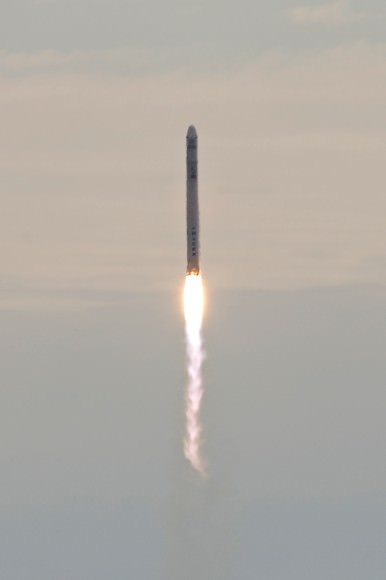
Update: 2:00 EST: This update from SpaceX: “SpaceX is still working through issues in Dragon’s propulsion system. The mission’s first rendezvous burn was delayed at least one orbit to about 2 p.m. EST.” (which is now)….stay tuned for updates. There will be a press conference sometime today, NASA has said, but has not yet set a specific time.
Update: 2:28 EST: NASA says the Dragon capsule Dragon will no longer be able to make its scheduled rendezvous with the station tomorrow. SpaceX indicated the rendezvous with the ISS will now not happen until at least Sunday morning. There will be a news briefing at 3pm EST.
Communication between the ISS crew and mission control confirms the delay for the rendezvous: “They are making progress recovering their prop system, but it’s not going to be in time to support the rendezvous and capture for tomorrow,” NASA’s spacecraft communicator told the crew. “So that is not going to happen tomorrow.”
“OK, copy, sounds like another off-duty day for us,” said ISS commander Kevin Ford. “We don’t wish that. We wish it gets fixed and gets up here to us. That’s really awesome they’re working their way through the problems. That’s what it’s all about.”
Update: 2:58 EST: Latest Tweet from Elon Musk has good news: “Pods 1 and 4 now online and thrusters engaged. Dragon transitioned from free drift to active control. Yes!!”
Update: 4:11 EST: Here’s a brief synopsis of the press briefing:
During the press conference, Elon Musk indicated there was a blockage in the helium line leading to the oxidizer pressurization system, or perhaps a stuck valve, and the pressure was not high enough to turn on the thrusters. The engineering team cycled the valves several times, using pressure hammering to loosen up and debris that might be stuck in the valves. And now, the pressure is nominal, with all the oxidizer tanks holding the target pressure on all 4 pods, and so Musk said he is hopeful that all the thrusters will be able to work.
Musk said they decided to deploy Dragon arrays before two thrusters were online because the temperature of the array actuators was dropping rapidly. But they also deployed solar arrays partly to mitigate Dragon’s attitude rotation “like a skater extending arms during a spin,” he said.
Musk mentioned the batteries on board had 12-14 hours of life, so deploying the arrays early was not a question of running out of power, but making sure solar arrays didn’t get so cold that they couldn’t deploy later.
NASA’s Mike Suffredini said that at least 3 of the 4 pods have to be operational in order to make an approach to the ISS.
They will make a decision on when to make the rendezvous when they’ve ascertained if the thrusters are working.
Ken Kremer will provide a more detailed update later.
{End of live blogging}
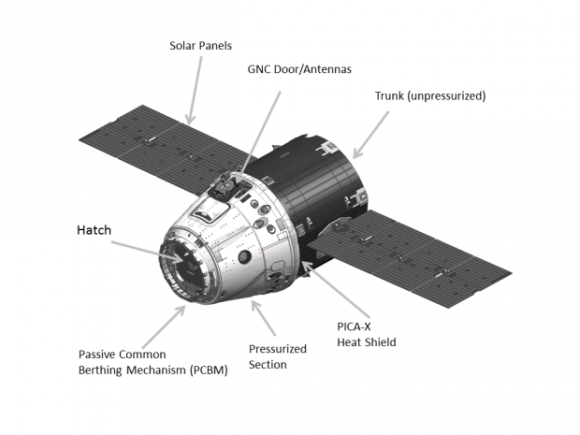
The Dragon is carrying 544 kilograms (1,200 lbs) of scientific experiments and supplies to the space station, and docking was scheduled for Saturday at 6:30 a.m. ET (1100 GMT). That will likely change.
Dragon’s 18 Draco thrusters permit orbital maneuvering and attitude control. They are mounted on four pods: two of the pods contain five thrusters and the other two contain four thrusters. They are powered by nitrogen tetroxide/monomethylhydrazine, and the thrust is used to control the approach to the ISS, power departure from the ISS, and control Dragon’s attitude upon reentry.
As far as the solar arrays, each array is constructed of four panels. Each array measures 6.4 meters (21 feet). The arrays can draw up to 5,000 watts of power, which is about enough power to light about 85 light bulbs. For launch, the arrays are stowed in the unpressurized trunk of the Dragon and are covered by protective fairings. When the fairings jettison, the automated deployment of the arrays is triggered. On the way back to Earth the trunk is jettison and it, along with the arrays, burn up in the atmosphere.
If the arrays do not deploy, battery life on Dragon is only a few hours 12-14 hours, which would not be enough time to keep it alive until it would reach the ISS. It will be about 20 hours from launch until it approaches the ISS, if the mission continues on its scheduled timeline.
You may recall that during the previous mission to the ISS in October 2012 (the second flight to ISS, but first operational SpaceX resupply flight) one of the rocket’s first stage engines suffered an anomaly, where a combustion chamber ruptured. That engine was shut down, and the other engines fired longer to make up for it. The Dragon cargo made it to the correct orbit and continued on the ISS, but a satellite that was launched to orbit as a secondary payload by the Falcon 9 rocket was sent into the wrong orbit as a result of “a pre-imposed safety check required by NASA,” on October 7, and the ORBCOMM OG2 satellite later deorbited and fell back to Earth.
For this launch, all nine engines appeared to work nominally and all stages separated perfectly.
But obviously the SpaceX team saw the thruster problem immediately, as that’s when the webcast was ended.


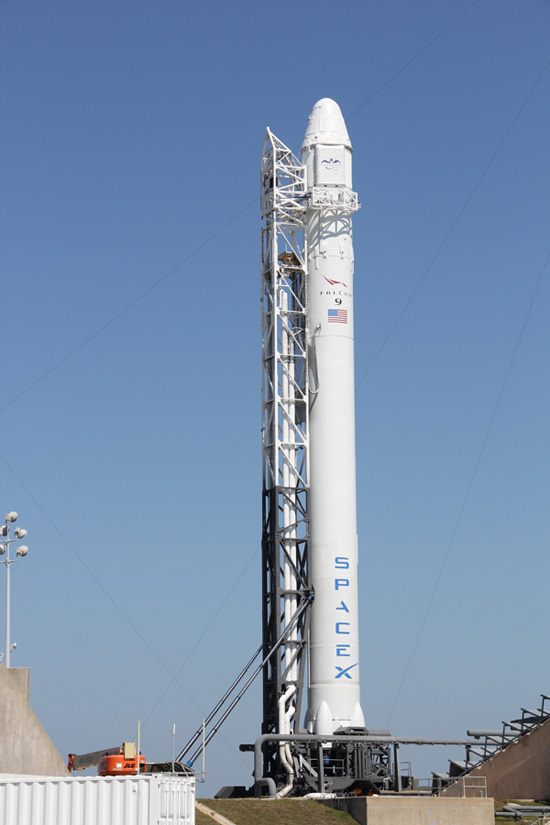

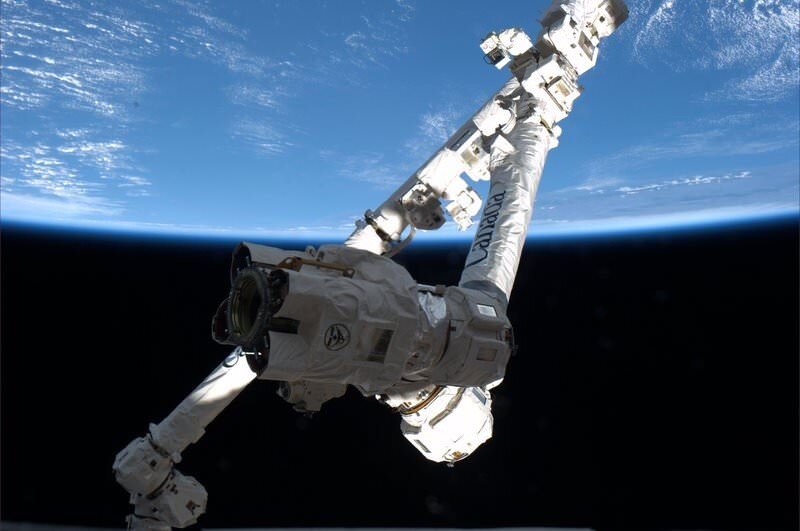
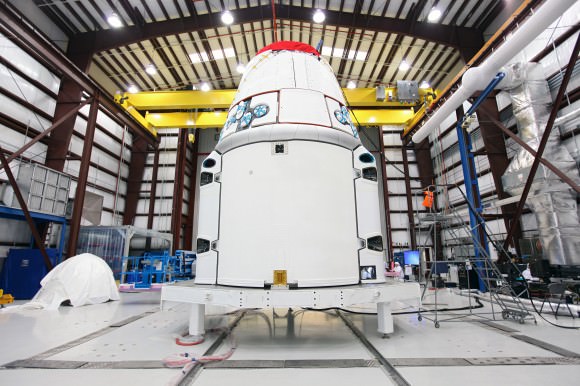
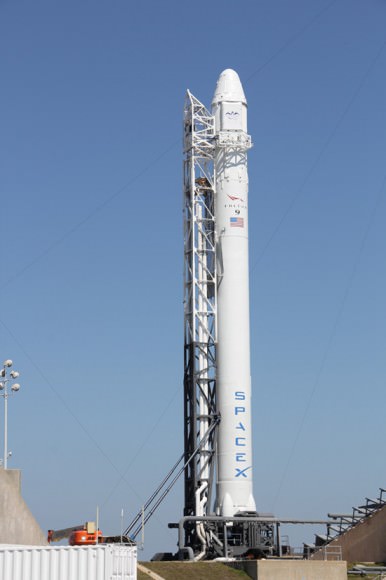
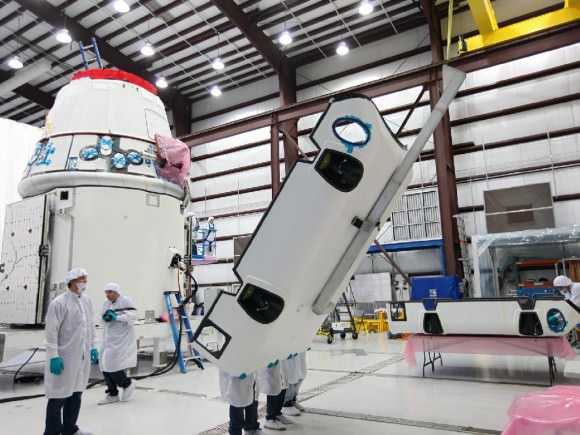
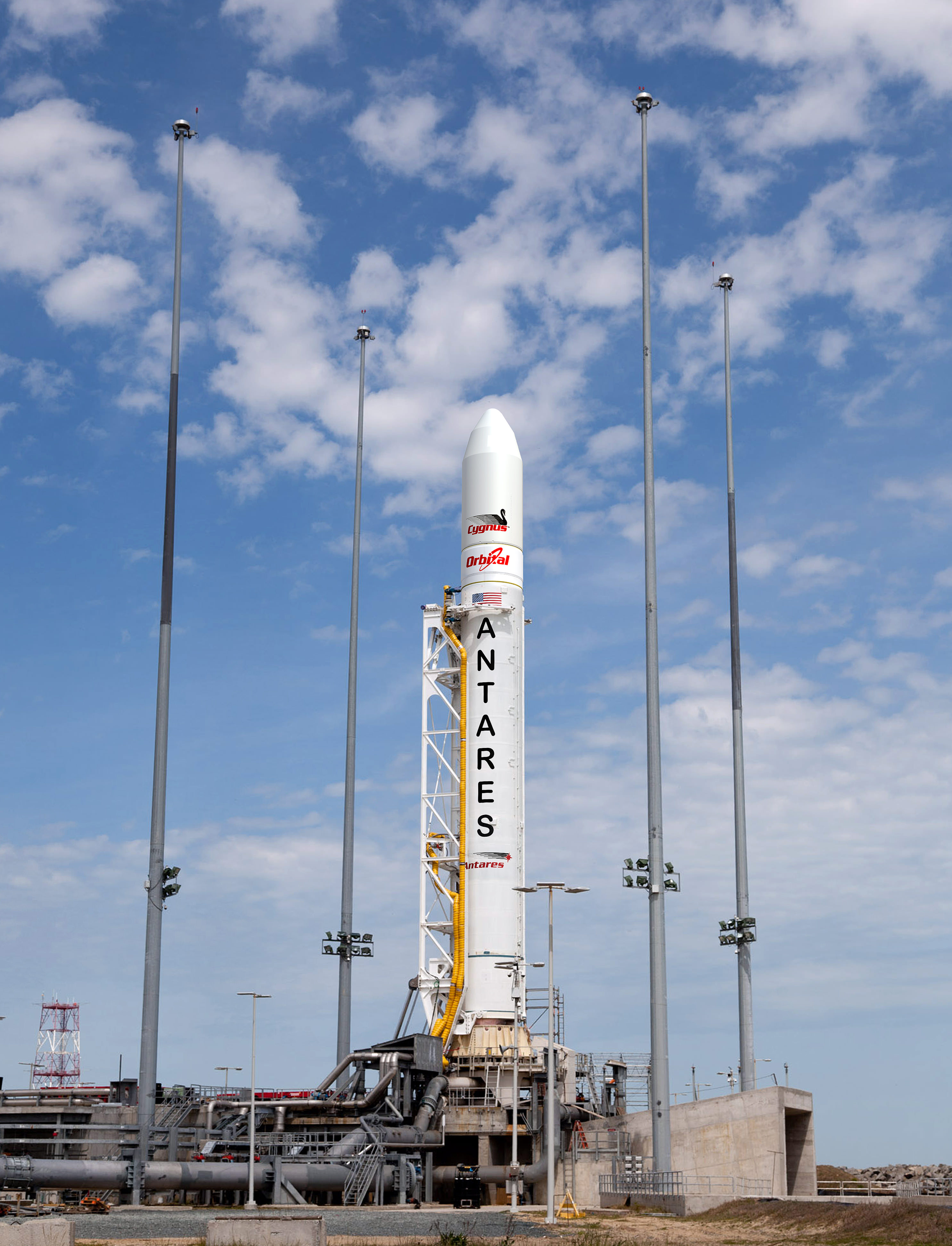
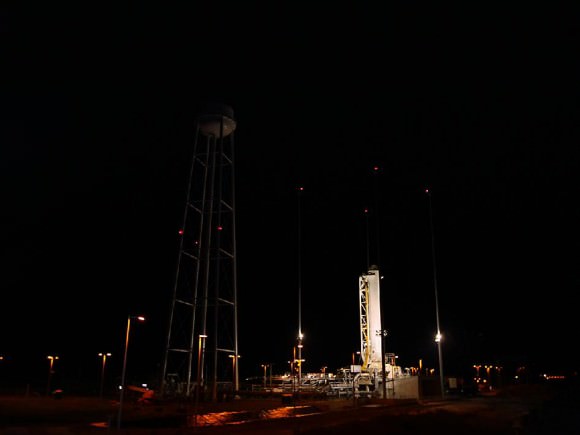

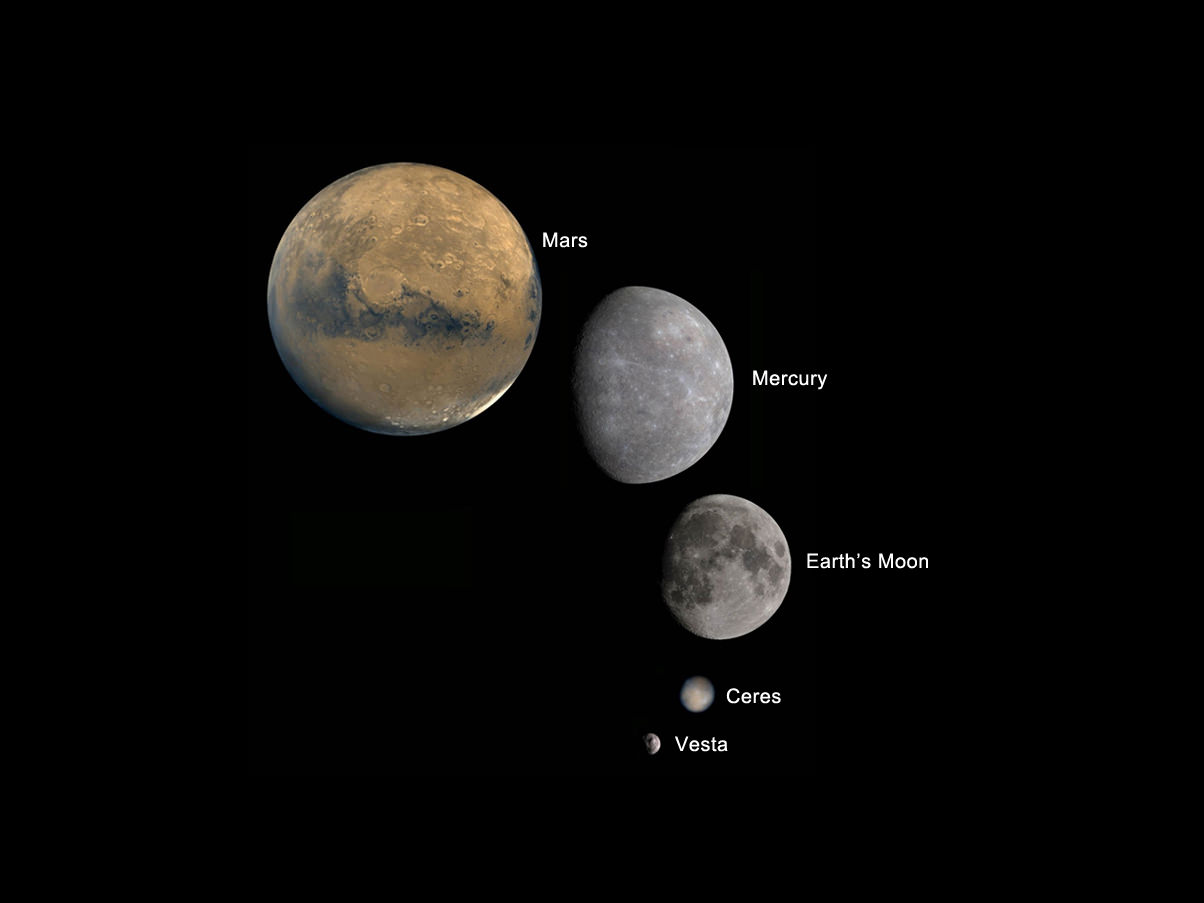

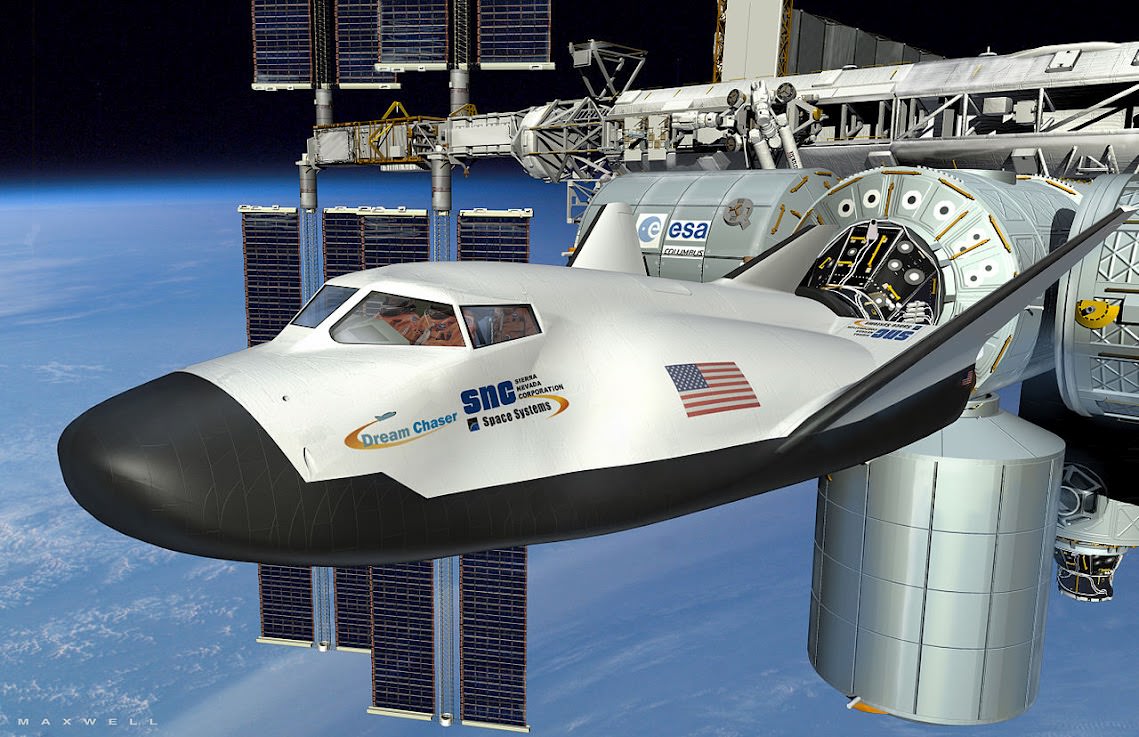
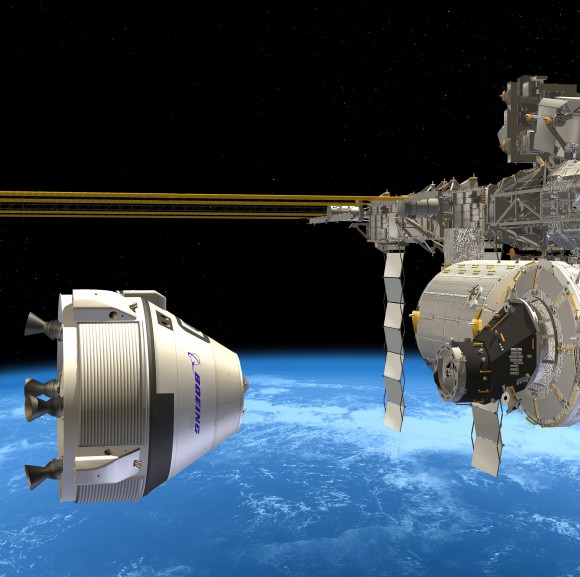
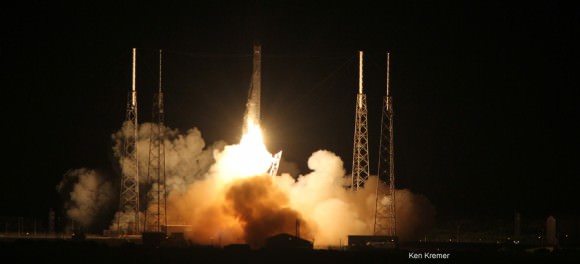
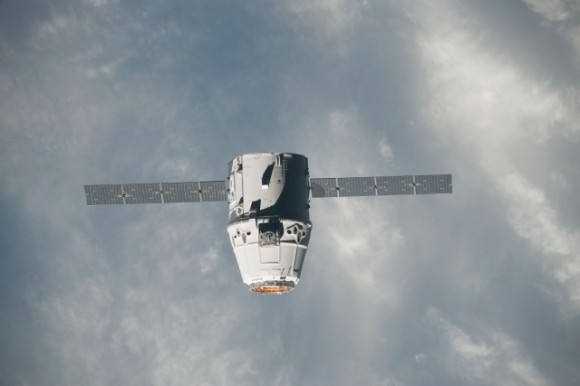
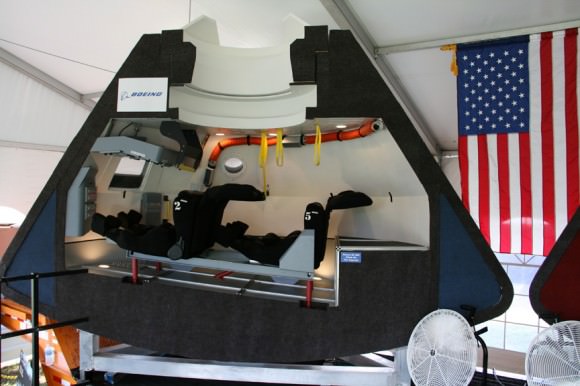
![Dream_Chaser_Atlas_V_Integrated_Launch_Configuration[1]](https://www.universetoday.com/wp-content/uploads/2013/01/Dream_Chaser_Atlas_V_Integrated_Launch_Configuration1-315x580.jpg)
